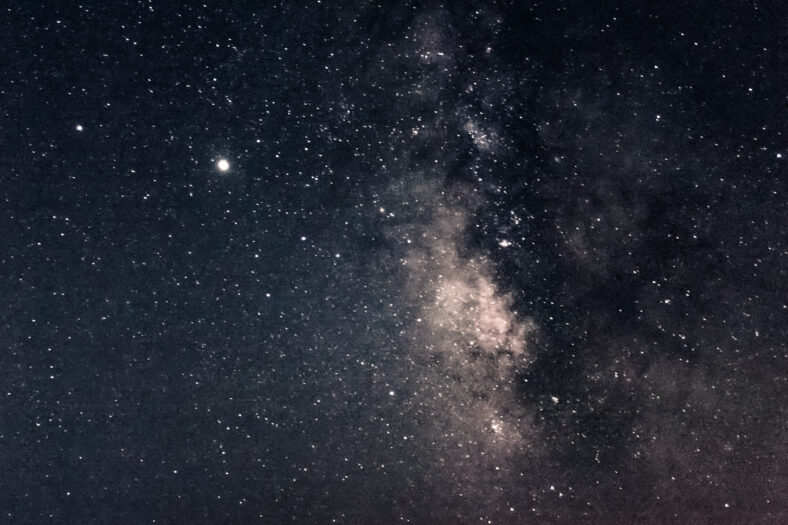Galaxy Cores Could Hold Giant Dark Stars Or Invisible Clumps Of Matter

The cores of galaxies may not be made of what scientists thought. New research suggests that they could hold giant “dark stars,” or invisible clumps of matter.
Most of the mass in any galaxy is invisible, so astronomers do not yet know the identity of the dark, mysterious matter.
In recent years, the leading theory about dark matter has been that it is made of some type of heavy particle that very rarely interacts with light or other matter. However, this hypothesis does not explain the relatively low density of galaxy cores.
Simulations of dark matter’s behavior show that it should clump up to extremely high densities, which does not align with observations. One possible answer is that dark matter particles are really light, far lighter than any other known particle.
These hypothetical particles have been dubbed “fuzzy” dark matter and would allow the quantum wave nature of the particles to manifest on larger scales, meaning they can form giant clumps of invisible matter known as “dark stars.”
Dark stars can be incredibly massive, extending into space for thousands of light-years while still having relatively low density. It would match observations of galaxy cores.
In a study, a team of astrophysicists explored how galaxies might adapt their responses to fuzzy dark matter. They built a simple toy model that contained just two components: a large fraction of fuzzy dark matter and a smaller percentage of a simple, ideal gas.
Then, they calculated how these two components would interact with each other and evolve under both of their gravitational influence.
At first, the two kinds of matter displayed random behavior, but no matter how they started off, the team found that they quickly mixed together to create a large, stable core surrounded by a cloud of dark matter.

Sign up for Chip Chick’s newsletter and get stories like this delivered to your inbox.
The researchers gave the result the name of a fermion-boson star after the materials that were combined to form the central object. The star would’ve been unlike the typical image of what we know stars to be.
It would be enormous and up to 10,000 light-years across. It would also be completely invisible, except for the faint glow of the gas spread throughout it.
The researchers noted that this would be the ideal representation of a galactic core. It contains high densities of normal matter, but not too high, which validates a main prediction of the fuzzy dark matter model.
Moving forward, more sophisticated and realistic simulations will need to be built in order to track the influence that fuzzy dark matter and the dark stars they create have on their nearby environment. Those results will be compared to observations to determine whether this idea should continue to be explored.
The findings were posted to the preprint server arXiv.
More About:News